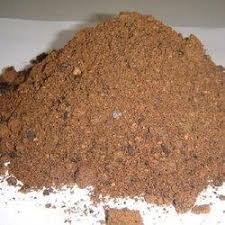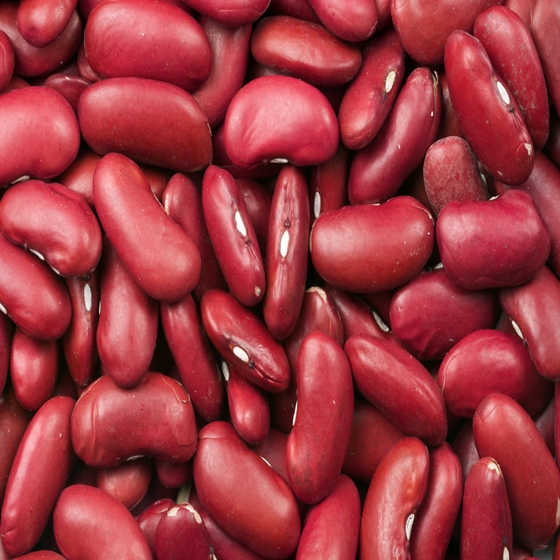Welcome to World's First Food Marketplace for Exporters, Importers, Suppliers, and Buyers!
Sign in
Your orders
Please login to view your cart.
You are here
Animal feed products

Animal feed products
USD 890.00 / Ton [FOB Price]
100 Ton [MOQ]
Other Food Grains [Product Category]
United States [Country of Origin]
Credit Card, L/C, T/T, Wire Transfer [Payment Terms]
35 days [Delivery Time]
Need more info or want to make a deal?
Contact Supplier
Category: Animal feed.
Product 1: SOYBEAN MEAL
Details:
Soybean meal is the product remaining after extracting most of the oil from whole soybeans. The oil may be removed by solvent extraction or by an expeller process in which the beans are heated and squeezed. The nutrient composition of the oil extracted soybean meal 48 is shown in the table below.
Soybean meal is high in protein and energy and is one of the most commonly used protein supplements in North America. It is a palatable feedstuff and may be used as the major protein supplement in rations for dairy cattle.
Typical Analysis (Solvent extracted soybean meal 48)
Dry matter 89 %
Crude Protein 48.0 %
Fat 01.0 %
Crude fiber 03.0 %
Neutral Detergent Fiber 07.1 %
Acid Detergent Fiber 05.3 %
Calcium 00.2 %
Phosphorus 0.65 %
Total Digestible Nutrients 78.0 %
Net energy—Lactation 81.1 Mcal/100 lbs
Caution: Any recommendations given here should be considered as general only and may not apply in your specific situation. All final recommendations should be made by a qualified person familiar with your particular circumstances.
Product 2: BLOOD MEAL, WHOLE
Details:
Whole blood meal is produced by spray drying at low temperatures, the fresh whole blood from animal processing plants. The fresh blood is collected in on-site cooling tanks that utilize agitation to prevent coagulation of the fresh blood. Once delivered to the drying plants the whole blood is centrifuged to remove foreign material and then circulated through a disintegrator to rid all remaining foreign particles prior to spray drying.
Typical Analysis
Crude protein 80 %
Crude fat 1 %
Crude fiber 1 %
Ruminant digestible protein 63.1 %
Typical Amino Acid Profile
Methionine 1.0 %
Crystine 1.4 %
Lysine 6.9 %
Tryptophane 1.0 %
Isoleucine 0.8 %
Histidine 3.05 %
Valine 5.2 %
Leucine 10.3 %
Arginine 2.35 %
Glycine 4.4 %
Storage and Handling
Whole blood meal is available in bags or as bulk material. Whole blood meal is packaged in 50 pound poly-lined paper bags.
Product 3: BONE MEAL
Details:
Guaranteed Analysis
Phosphorous, min. 14 %
Calcium, min 23 %
Fluorine, max .05 %
Typical Trace Element Analysis (measured in ppm)
Iron 400
Magnesium 120
Manganese 50
Molybenum 5
Copper 5
Aluminum 200
Vanadium 5
Sodium 300
Sulfates 2000
Potassium 20
Cobalt 0.5
Zinc 100
Lead 2.5
Mercury 25
Selenium .05
Arsenic 0.5
Cadmium 0.8
Chlorides 400
Bulk Density 40 – 50 lbs./cu.ft.
Moisture less than 2.0 %
Color white
Packaging: Multi-wall paper bags 50 lbs. net
Product 4: BONE MEAL, STEAMED
Details:
Steamed Bone Meal is the most natural form of calcium and phosphorus available for animal health. This dried and ground product is sterilized by cooking with steam under pressure. This material is produced exclusively from bones.
Standard Packaging; Steamed Bone Meal is packed in 50 lb. paper bags. 2,500 lbs. are on each pallet. Pallets are to be exchanged. Steamed Bone Meal is also available in one ton super sacks.
Guaranteed Analysis
Calcium 23% minimum
Phosphorus 13% minimum
Crude Protein 6% minimum
Moisture 7% maximum
Particle Size:100% will pass through a 40 mesh screen with 98% through a 100 mesh screen.
Product 5: FEATHER MEAL
Details:
Hydrolyzed poultry feathers or feather meal is produced by hydrolyzing clean, undecomposed feathers from slaughtered poultry.
The most important factor affecting the quality of hydrolyzed poultry feathers is the extent of hydrolyzation. If less than 75 percent of the crude protein content is digestible by the pepsin digestibility method, then hydrolyzation was incomplete and protein quality is reduced.
The protein in feather meal is degraded slowly in the rumen compared to most other protein sources. In research at Purdue University, a combination of feather meal and urea produced average daily gains in growing beef cattle similar to that achieved with soybean meal.
There is very little experience with feather meal in dairy cattle rations. It is not very palatable and should be introduced into the ration gradually. It may be fed to milking cows at an average rate of up to 1 ½ pounds (0.7 kg) per cow per day.
Typical Analysis
Dry matter 92 %
Crude Protein 85.0%
Fat 03.0 %
Crude fiber 03.0 %
Neutral Detergent Fiber --- %
Acid Detergent Fiber 16.2 %
Calcium 0.45 %
Phosphorus 0.31 %
Total Digestible Nutrients 63.0 %
Net energy—Lactation 64.0 Mcal/100 lbs
Product 6: FISH MEAL, MENHADEN – LOW ASH
Details:
Low Ash Menhaden meal differs from conventional commodity fishmeal by the additional process developed to remove a large amount of the bone. The resulting meal has a significantly reduced ash content, and a corresponding increase in protein. This meal is ideal in situations where a lower mineral content is needed. This process results in a meal with a much smaller particle size.
Proximate Composition Micro and Macro Minerals
Typical Guaranteed
Crude Protein 70.0 68 min
Calcium % 3.4
Fat 9.0
Phosphorus % 2.2
Moisture 9.7
Potassium % 1.0
Ash 13.0
Magnesium % 0.2
Digestibility (0.2%) 97.8
Sodium % 0.7
Digestibility (0.0002%) 91.1 90 min Manganese- PPM 45.2
TVN 0.16 0.18 max
Iron- PPM 924.0
Boron- PPM 4.5
Amino Acids % of Sample
Copper-PPM 7.8
Zinc- PPM 94.8
Aspartic Acid 6.4
Chromium- PPM 4.0
Threonine 3.0
Selenium- PPM 2.0
Serine 2.7
Strontium- PPM 66.2
Glutamic Acid 9.2
Barium- PPM 14.3
Proline 3.5
Aluminum- PPM 774.4
Glycine 5.4
Alanine 4.6
Cystine 0.7
Vitamins- MG/LB- Literature Values
Valine 3.5
Methionine 2.3
Botin 0.1
Isoleucine 3.0
Choline 1360.0
Leucine 5.1
Folic Acid 0.1
Tyrosine 2.2
Niacin 25.0
Phenylalanine 2.8
Pantothenic Acid 4.0
Histidine 2.0
Vitamin B1- Thiamine 0.3
Lysine 5.6
Vitamin B2- Riboflavin 2.2
Arginine 4.4
Vitamin B6- Pyridoxine 2.7
Tryptophan 0.7
Vitamin B12 0.1
Taurine 0.6 a-
Tocopherol (IU/#) 9.5
Hydroxyproline 1.3
Product 7: Fish meal, protein 65%
Details:
Fish product or fishery byproduct obtained by processing whole or parts of fish. This type of fish meal contains 63-68% protein (as fed). Note: it is recommended to check the regulatory status of this product before using it for livestock feeding.
Values
Averages as fed / on DM / other unit Min/max as fed Min/max on DM Min/Max other unit
Main constituents
Parameter As fed On DM Unit Other Unit
Dry matter 92.1 100 % -
Crude protein 65.2 70.7 % -
Crude fibre 0 0 % -
Crude fat 9.2 10 % -
Ash 16.8 18.2 % -
Insoluble ash 0.5 0.5 % -
NDF 5.3 5.8 % -
ADF 0.5 0.5 % -
Lignin 0.2 0.2 % -
Water insoluble cell walls 4.5 4.9 % -
Starch 0 0 % -
Starch, enzymatic method 0 0 % -
Total sugars 0 0 % -
Gross energy (kcal) 4510 4890 kcal/kg
Gross energy (MJ) 18.9 20.5 MJ/kg
Product 8: MEAT AND BONE MEAL
Details:
Meat and bone meal is the dried and rendered product from mammal tissues. It does not contain horn, hair, hide trimmings, manure, stomach contents, added blood meal or poultry by-product. The calcium content should not be more than 2.2 times the phosphorus content. A calcium content higher than this indicates additional calcium from a source other than bone.
The protein in meat and bone meal is degraded relatively slowly in rumen.
Meat bone meal can be fed as a protein source. It may be included in the grain mix at a rate of up to 5 percent or fed at up to 1 ½ pounds (0.68 kg) per cow per day. It is not very palatable and should be introduced into the ration gradually.
Typical Analysis
Dry matter 92 %
Crude Protein 50.0 %
Fat 09.5 %
Crude fiber 02.5 %
Neutral Detergent Fiber --- %
Acid Detergent Fiber --- %
Calcium 10.1 %
Phosphorus 04.8 %
Total Digestible Nutrients 65.3 %
Net energy—Lactation 68.1 Mcal/100 lbs
Product 9: MEAT MEAL 57 %
Details:
Typical Analysis
Dry Matter 97% Calcium 9.6%
Crude Protein 57% Total Phosphorus 4.35%
Ether Extract 7.2% Available Phosphorus 4.0%
Crude Fiber 2.30% Ash 25%
Amino Acids
Methionine 0.75% Isoleucine 1.9
Cystine 0.68% Histidine 1.1%
Lysine 3.0% Valine 2.6%
Tryptophan 0.35% Arginine 3.7%
Phenylalanine 1.9%
Vitamins
Carotene - Pantothenic Acid mg/kg 5.8
Vitamin A IU/g - Biotin 140
Vitamin E mg/kg - Folic Acid 600
Thiamine mg/kg 0.2
Choline mg/kg 2200
Riboflavin mg/kg 5.2
Vitamin B 12 90
Niacin mg/kg 59.4
Minerals
Sodium 1.60% Manganese ppm 39.5
Potassium 0.55% Iron ppm 440
Chloride 0.90% Copper ppm 9.7
Magnesium 0.4% Zinc ppm 100
Sulfer 0.5% Selenium ppm 0.4
Product 10: POULTRY MEAL
Details:
Typical Analysis. Standard Deviation
Protein (N x 6.25) 65.1% 1.9
Fat 11.5% 1.0
Moisture 5.0% 0.7
Crude Fiber 2.2% -
Ash 17.1% 1.8
Calcium 5.4% -
Phosphorus 3.0% -
Pepsin Digestibility 89.7% 0.5
Sodium 0.5% -
Amino Acid Profile
Lysine 3.68%
Methionine 1.18%
Cystine 0.65%
Tryptophan 0.47%
Histidine 1.25%
Arginine 4.35%
Aspartic 4.89%
Threonine 2.34%
Serine 2.66%
Glutamic 7.72%
Proline 4.52%
Glycine 7.31%
Alanine 4.36%
Valine 2.51%
Isoleucine 2.02%
Leucine 4.02%
Tyrosine 1.84%
Phenylalanine 2.25%
Hydroxyproline 2.00%
Product 11: Buckwheat flour
Details:
SUPREME buckwheat flour is prepared from the whole buckwheat fruit in which some of the hull is retained.
Physical Characteristics:
Color: Light to dark grey.
Aroma: Typical sweet grain flour aroma.
Flavor: Acidic buckwheat taste.
Texture: Free from hard or caked lumps and foreign substances.
Granulation 85.0% Minimum thru a U.S. #80 mesh screen
40.0% Minimum thru a U.S. #200 mesh screen
Chemical
Moisture: 16% Maximum
Protein: 7 % Minimum
Microbiological
E. Coli: <10 cfu/g
Salmonella Negative
Intended Use:
This product is intended for use as an ingredient. Further processing is required for food safety.
Packaging:
This product is normally packed in 50lb multi-walled paper bags or 4lb poly bags. Product name, brand, and production code identify each bag.
Storage.
Shelf-life: The minimum shelf life of 24 months from the date of manufacture; when transported and stored in a clean, dry, infestation free environment. The product should be stored away from excess heat, moisture, and direct sunlight.
Suitability Information:
Non-GMO
Kosher Pareve
Halal Suitable
Vegetarian Suitable
Vegan Suitable
Country of Origin: USA
Precautionary Allergen Statement:
Due to a minor risk of cross-contamination from agricultural practices, this product may come in contact with wheat and other grains containing gluten (rye, barley, oats, triticale, kamut, spelt and their hybridized strains). We cannot guarantee that this product is “Gluten Free”. Mustard seed and buckwheat seed share some of the same processing equipment. Procedures are in place to avoid cross-contamination within our facility.
Similar Products from other suppliers








